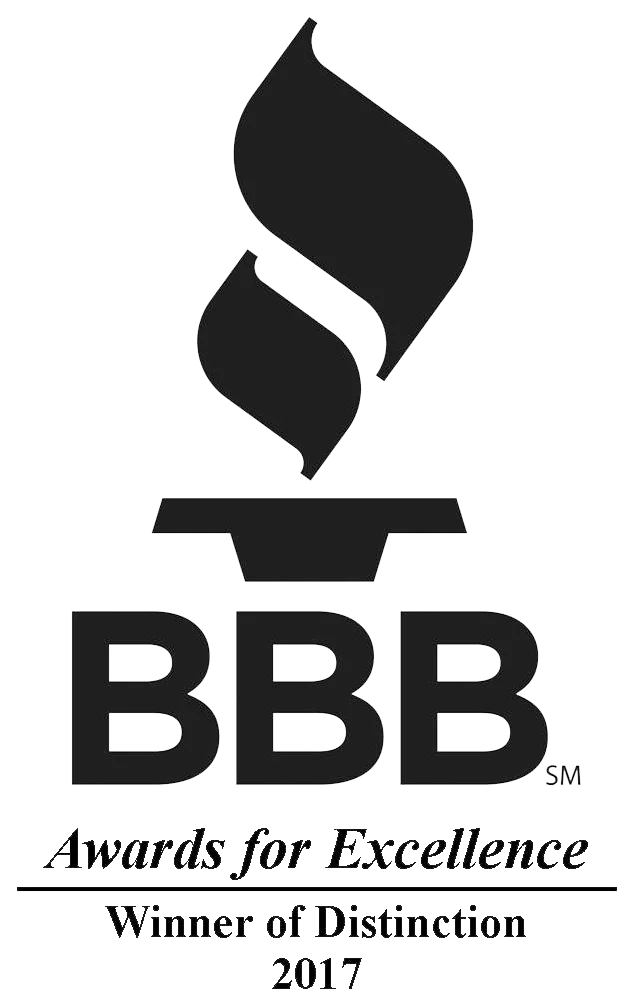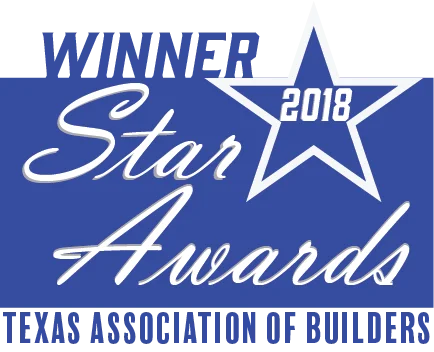When selecting exterior materials used for a home, durability and the choice of modern materials are critical factors that can greatly influence aesthetics and maintenance requirements. Different types of exterior finishes, including wood, stucco, and fiber cement, offer varying levels of protection and design versatility.
The following are ten resilient options of siding material that enhance a residence's curb appeal and provide robust protection against environmental elements. Each material presents distinct advantages, from the sophistication of limestone to the contemporary allure of metal roofing. These choices are equally relevant for residential homes and commercial building exteriors.
Understanding the types of siding available allows homeowners to select materials that best complement their architectural style while ensuring little maintenance over time. For example, fiber cement, which is composed of portland cement, offers exceptional durability and is available in a range of colors to match various design preferences.
For those who appreciate classic aesthetics, options like brick provide timeless charm and structural resilience. Additionally, incorporating natural light into exterior design elements enhances the overall ambiance of a home. However, ensuring proper installation of these materials is essential for maximizing their longevity and performance.
Learn why Keechi Creek Builder is recognized as an expert in constructing enduring homes.
Key Takeaways:
- Fiber cement, stone veneer, and metal roofing are top choices for long-lasting exterior finishes that can withstand harsh weather conditions.
- When choosing exterior materials, consider durability, maintenance, and the overall aesthetic to ensure a beautiful and long-lasting finish.
- Maintaining these materials is key to preserving their durability and extending their lifespan. Trust experts like Keechi Creek Builder for quality home building with durable exterior finishes.
Fiber Cement Siding
Fiber cement siding represents a contemporary and innovative building material that effectively combines the visual appeal of traditional wood siding with the durability and low maintenance requirements associated with synthetic materials.
Composed primarily of cement, sand, and cellulose fibers, fiber cement siding provides homeowners with exceptional energy-efficient properties that enhance thermal performance, thereby reducing heating and cooling costs. This remarkable material excels in moisture resistance, significantly minimizing the risk of mold and rot, which are common concerns with natural wood siding. In contrast to vinyl siding, which is prone to fading over time, fiber cement siding retains its color and appearance for many years, demonstrating its cost-effectiveness in the long term.
Key features of fiber cement siding include:
- Resistance to warping and cracking
- Availability in a variety of colors and styles
- Environmental sustainability due to its raw materials
These attributes position fiber cement siding as a preferred option for individuals seeking to invest in a building material that not only enhances aesthetic appeal but also ensures longevity and durability.
Stone Veneer
Stone veneer is a widely utilized building material that enhances the aesthetic appeal of exterior structures while offering the durability and low maintenance that contemporary homeowners seek. This innovative construction material replicates the appearance of natural stone but is significantly lighter and easier to install, making it an exemplary choice for both new constructions and renovations.
There are various types of stone veneer available, including natural stone, manufactured stone, and thin stone veneer, each presenting unique textures and finishes that can elevate a building's design. Installation methods also vary, with options such as adhered systems or mechanical fastening tailored to meet different project requirements.
From an architectural perspective, stone veneer contributes a timeless elegance, seamlessly integrating with diverse styles ranging from contemporary to traditional. Additionally, eco-friendly options, such as recycled stone materials, support sustainable building practices.
In comparison to alternatives such as brick siding and fiber cement siding, stone veneer distinguishes itself through its lighter weight and greater design flexibility. While brick provides a classic appearance, it can be more labor-intensive to install, and although fiber cement is durable, it may lack the organic warmth that stone veneer naturally embodies.
- Natural stone veneers offer authentic textures and patterns.
- Manufactured options provide versatility in design along with cost savings.
- Thin veneers are particularly suitable for projects with weight restrictions.
Metal Roofing
Metal roofing is increasingly being recognized as a preferred option for homeowners seeking sustainable and durable materials for their construction projects. Providing exceptional longevity, metal roofs are resistant to adverse weather conditions, fire, and pests, thereby serving as a reliable solution for safeguarding building structures while also offering energy-efficient thermal insulation.
The remarkable durability of metal roofs allows them to last over 50 years with appropriate maintenance, significantly outlasting traditional roofing materials such as asphalt shingles, which typically necessitate replacement every 15 to 20 years. Additionally, their lightweight characteristics considerably reduce the overall load on a building's structure, making them suitable for a wide range of architectural designs.
Recent advancements in metal roofing technology, including enhanced coatings and reflective surfaces, further improve efficiency by optimizing energy performance and lowering cooling costs during warmer months.
Key benefits of metal roofing include the integration of modern materials:
- Durability against harsh climatic conditions
- Minimal maintenance requirements
- Availability of environmentally friendly options
These advantages are contributing to the increasing popularity of metal roofing, not only as a viable roofing solution but also as a strategic investment in long-term property value.
Brick
Brick is one of the most established and widely utilized building materials in the construction industry, recognized for its structural integrity and aesthetic appeal. Its durability and energy-efficient properties render it a reliable choice for long-lasting building structures, while its natural composition ensures minimal environmental impact.
When evaluating the various types of bricks, options such as clay bricks, concrete masonry units, and fly ash bricks are notable for their unique thermal insulation characteristics, which enhance energy efficiency in buildings. These bricks not only provide structural strength but also contribute to the regulation of indoor temperatures, a crucial aspect for environmentally sustainable structures.
In traditional architectural designs, bricks have played an integral role, imparting character and warmth. Conversely, modern interpretations embrace their versatility alongside newer materials such as fiber cement and stone veneer. While these alternatives present different aesthetic possibilities, they often do not match the level of thermal performance inherent in natural bricks.
- Clay Bricks: Renowned for their strength and longevity.
- Concrete Masonry Units: Known for their versatility and cost-effectiveness.
- Fly Ash Bricks: Lightweight and environmentally sustainable.
Thoughtfully combining these materials can yield harmonious designs that integrate traditional elements with contemporary sustainability objectives.
Engineered Wood Siding
Engineered wood siding represents a synthesis of traditional aesthetics and contemporary technology, providing a sustainable material option for homeowners who value both durability and environmental responsibility. This innovative construction material is specifically designed to resist moisture absorption and common wood-related issues such as warping and splitting, thereby delivering a long-lasting exterior finish.
Engineered wood siding is produced through a meticulous process that involves bonding wood strands, veneers, or fibers with adhesives under high pressure, resulting in a strong and uniform product.
Advantages over natural wood siding:
- It offers enhanced resilience against pests and extreme weather conditions,
- ensures consistent performance, and
- reduces the risk of decay.
Suitability for various climates: This engineered material adapts effectively to diverse environmental conditions, making it particularly suitable for regions with fluctuating temperatures and humidity levels.
Eco-friendly attributes: By utilizing recycled wood fibers, engineered wood siding minimizes waste and supports sustainable forestry practices.
Energy-efficient designs: Its insulating properties aid in maintaining comfortable indoor temperatures, thereby reducing energy consumption.
In comparison to vinyl and fiber cement, engineered wood siding provides an advantageous combination of aesthetics, durability, and environmental benefits, making it a compelling choice for modern home exteriors.
Vinyl Siding
Vinyl siding is a popular choice due to its cost-effectiveness, durability, and low maintenance requirements. As one of the most versatile building materials, it comes in various styles and colors to suit different architectural designs. Insulated vinyl siding enhances thermal insulation, making it an energy-efficient option for homeowners.
Vinyl siding is a widely utilized exterior finish that offers an optimal combination of aesthetic appeal and minimal maintenance requirements. Recognized for its durability and resistance to environmental elements, vinyl siding provides homeowners with a versatile solution for safeguarding their properties while necessitating minimal upkeep over time.
This popular option is available in various styles and colors, enabling homeowners to select finishes that complement both their personal taste and architectural design. Whether opting for traditional lap siding, contemporary vertical panels, or distinctive shake shingles, vinyl siding contributes to a refined appearance.
In terms of color selection, the options range from classic whites to vibrant hues, ensuring a suitable match for any home design. The installation process typically employs a straightforward layering technique, facilitating efficient application by contractors. When compared to alternatives such as fiber cement and metal siding, vinyl siding demonstrates superior durability and significantly lower maintenance requirements.
- Fiber cement necessitates painting every few years.
- Metal siding is prone to denting and rusting over time.
- Vinyl siding, conversely, is fade-resistant and does not require painting.
Ultimately, opting for vinyl siding provides aesthetic benefits without the associated burden of constant maintenance, making it a prudent choice for contemporary homeowners.
Stucco
Stucco is a traditional building material that has gained widespread popularity due to its durability and aesthetically pleasing finish, making it suitable for both residential and commercial structures. Composed of a mixture of cement, sand, and lime, stucco provides excellent waterproofing capabilities and enhances the structural integrity of buildings, thereby establishing itself as a reliable option for various climates.
The advantages of stucco extend beyond its robust appearance. This versatile material can significantly lower maintenance costs over time, owing to its resistance to fire and insects. When comparing stucco to alternative materials such as stone veneer and brick, it is evident that, while both options are durable, stucco offers a more streamlined application process and a wider variety of finishes.
- Durability: Stucco effectively withstands harsh weather conditions.
- Low Maintenance: Unlike brick or stone, stucco necessitates less upkeep to retain its appearance.
- Customizability: The range of finishes, from smooth to textured, makes stucco a preferred choice among designers.
A thorough understanding of the application process underscores its efficiency. Typically, this process involves three primary coats: the scratch coat for adhesion, the brown coat for a solid foundation, and the finished coat, which can be tailored to meet various stylistic preferences. This streamlined approach not only conserves time but also complements a variety of architectural designs, allowing homeowners to effortlessly achieve their desired aesthetic.
Choosing stucco over stone veneer or brick can result in a favorable investment with considerable long-term benefits.
Cedar Shingles
Cedar shingles are a traditional building material recognized for their natural beauty and outstanding weather resistance, making them a preferred option for both conventional and contemporary architectural designs. The unique texture and warm tones of cedar enhance the aesthetic appeal of any home while providing durability against various environmental factors.
When evaluating cedar shingles in comparison to alternatives such as vinyl and engineered wood, it is crucial to consider both the advantages and disadvantages associated with each material.
- Advantages: Cedar shingles provide superior insulation, aiding in the regulation of indoor temperatures. In contrast, vinyl is more susceptible to fading under intense sunlight, and engineered wood may lack the distinctive character offered by cedar.
- Disadvantages: Although cedar possesses significant aesthetic qualities, it necessitates regular maintenance to safeguard against rot and pest damage. This is in contrast to vinyl, which demands minimal upkeep, and engineered wood, recognized for its robustness.
Prospective homeowners should thoroughly contemplate their long-term maintenance commitments, as well as the aesthetic appeal and potential for increased property value, when making a decision regarding their siding selection.
Concrete and Innovative Construction Materials
Concrete is a fundamental building material recognized for its exceptional durability, structural integrity, and versatility in various construction applications. Its ability to be molded into nearly any shape renders it suitable for a wide range of uses, from foundational structures to decorative elements. Furthermore, innovative technologies, such as self-healing concrete, are expanding its capabilities even more.
This remarkable material has progressed beyond traditional applications to embrace forms that enhance aesthetics while also improving functionality. Among these innovative construction materials are:
- Decorative Concrete: Ideal for driveways, patios, and walls, it allows for artistic expression through techniques such as stamping, staining, or polishing.
- Self-Healing Concrete: This type incorporates specialized additives that activate when cracks form, thereby promoting longevity and minimizing maintenance requirements.
- Concrete Canvas: Used for rapid construction tasks, providing durable and flexible concrete solutions.
- Liquid Granite: A versatile alternative to traditional concrete, known for its eco-friendly properties.
As these advanced forms of concrete and innovative construction methods are integrated into contemporary architectural designs, they enable architects and engineers to create structures that are both visually appealing and resilient over time. The significance of these materials in sustainability and maintenance considerations is substantial, as they contribute to reduced resource wastage and lower environmental impacts. Additionally, materials like Transparent Wood, Carbon Fiber, and Aerogel are revolutionizing construction with their unique properties and applications.
Aluminum Siding and Modern Construction Materials
Aluminum siding is a lightweight and durable building material that presents an excellent low-maintenance option for homeowners seeking an appealing exterior finish. Its resistance to rust and corrosion, along with the availability of various colors and styles, renders aluminum siding a versatile choice for enhancing the aesthetic appeal of any residence.
This material is notable not only for its energy efficiency but also for the numerous advantages it offers when compared to alternatives such as vinyl and fiber cement. For example, the installation process of aluminum siding is relatively straightforward, often requiring less labor and time, which can result in reduced overall costs. However, it is important to acknowledge that while aluminum provides a multitude of benefits, it can be susceptible to denting and may not deliver the same level of insulation as fiber cement.
Benefits:
- Low maintenance with advanced decorative finishes
- Resistant to rust
- Availability of various styles and colors
Drawbacks:
- Prone to dents
- Lower insulation compared to fiber cement
When evaluating siding options, homeowners should carefully consider these factors, including the thermal conductivity of materials like carbon fiber and laminated wood, to ensure they select the material that best aligns with their needs and living environment. Materials like bio-coal lining and hemp reinforcement offer additional benefits for eco-friendly buildings.
Why Is Choosing Durable and Sustainable Exterior Materials Important?
Selecting durable exterior materials is crucial for homeowners who seek to protect their investments and ensure the long-term sustainability of their properties. Incorporating energy-efficient materials and sustainable options like composite siding can greatly enhance the longevity and environmental friendliness of a home.
Durable materials not only enhance the aesthetic appeal of structures but also necessitate less frequent maintenance, rendering them a cost-effective option over time.
Moreover, a variety of innovative construction materials such as transparent aluminum and sensiTiles are currently available, designed to be environmentally friendly, thereby contributing to the development of more sustainable and eco-conscious buildings.
What Factors Should Be Considered When Choosing Exterior Finishes?
When selecting exterior finishes, homeowners must consider several critical factors, including climate, maintenance requirements, and the desired aesthetic appeal. It is essential to understand how various building materials, such as stone veneer siding and natural wood siding, perform under different environmental conditions to make an informed choice that guarantees long-term durability and satisfaction.
The environment plays a significant role in this decision-making process. For example, local weather patterns can determine whether a more resilient material is necessary. In humid climates, materials such as fiber cement, which is known for its resistance to rot and pests, may be advantageous. Conversely, in drier regions, vinyl siding may be a more suitable option, as it offers excellent energy efficiency and requires minimal maintenance.
Additionally, the sustainability of the materials must not be overlooked. Options such as stone veneer and richlite provide a classic appearance coupled with natural durability; however, evaluating their environmental impact is crucial. The use of hemp reinforcement in construction can further reduce construction costs while enhancing structural requirements.
- Vinyl Siding: Cost-effective and resistant to fading.
- Fiber Cement: Highly durable and capable of mimicking wood.
- Stone Veneer: Offers a luxurious appearance with significant longevity.
Homeowners should also assess their local energy codes and consider sustainable materials to ensure that the selected exterior finish positively contributes to their overall energy efficiency.
What Are the Benefits of Each Material Mentioned?
Each exterior material discussed provides distinct advantages that cater to the diverse needs and preferences of homeowners, making it imperative to recognize their specific benefits. For example, fiber cement siding is esteemed for its durability and low maintenance requirements, while stone veneer significantly enhances the aesthetic appeal and value of a property. Conversely, metal roofing is distinguished by its longevity and resistance to weather-related damage. Additionally, incorporating waterproofing surfaces can enhance the preservation of these materials.
Different materials fulfill various practical and aesthetic roles, greatly influencing a home's overall charm and efficiency.
- Fiber cement siding is particularly noteworthy for its resistance to rot and pests, often necessitating less frequent replacement compared to traditional wood siding options.
- Stone veneer is unparalleled in its ability to elevate curb appeal, contributing to increased resale values, though its installation may be more labor-intensive and costly.
- Metal roofing offers exceptional longevity—frequently lasting 50 years or more—while also providing excellent insulation, which can lead to reduced energy costs over time. Additionally, metal siding can be an effective solution for weather resistance and durability.
By understanding these factors, homeowners can make informed decisions that align with their budgetary constraints and lifestyle requirements.
How Can Proper Maintenance Extend the Lifespan of These Materials?
Proper maintenance is essential for extending the lifespan of exterior materials, ensuring that they continue to perform effectively and maintain their aesthetic appeal over time.
Regular inspections, cleaning, and timely repairs can significantly mitigate wear and tear on materials such as vinyl siding and cedar shingles, thereby preserving their durability and functionality. Implementing a consistent maintenance schedule, along with using innovative materials like Transparent Wood or Self-healing Concrete, not only prevents costly repairs but also enhances energy efficiency, ultimately resulting in savings for homeowners in the long run.
Homeowners should consider the following recommendations for various materials:
- Vinyl siding: Clean gently with a soft brush and a mixture of detergent and water at least once a year to prevent dirt buildup and fading.
- Cedar shingles: Conduct regular inspections for rot or insect damage and apply a sealant every few years to prolong their lifespan. Consider using Hemp Reinforcement for enhanced durability.
- Wood decks: Stain and seal annually to protect against moisture and UV damage, ensuring both durability and aesthetic appeal. The use of Laminated Wood can also offer improved structural integrity.
- Brick and stone: Power wash to eliminate moss and algae, followed by the application of a water repellent to prevent water penetration. Utilizing Liquid Granite can further enhance the surface's resilience.
By prioritizing these maintenance actions, homeowners can ensure their investments remain sound while enhancing property values.
Why Should Homeowners Trust Keechi Creek Builder for Their Home Building Needs?
Homeowners can confidently rely on Keechi Creek Builder for their home building requirements due to the company's unwavering commitment to utilizing high-quality materials and innovative construction techniques that ensure durable outcomes. With a team of seasoned professionals, Keechi Creek Builder specializes in the integration of robust materials such as fiber cement siding, stone veneer, and metal roofing to create eco-friendly structures designed to withstand the test of time. The use of advanced building materials like Carbon Fiber and Aerogel further demonstrates their dedication to cutting-edge solutions.
The company's reputation is founded on a commitment to excellence, as demonstrated by numerous satisfied clients who commend their meticulous attention to detail and their ability to complete projects on time and within budget.
- Innovative project management strategies are employed to ensure that each phase of construction progresses smoothly.
- Consistent communication keeps homeowners informed and engaged throughout the building process.
Case studies underscore their capabilities, such as a recent project that successfully transformed a traditional home into an energy-efficient masterpiece while preserving its original charm. This project utilized Concrete Canvas and SensiTiles to enhance functionality and design. Clients have expressed their appreciation for the seamless integration of modern amenities with timeless design.
This dedication to transparency and relationship-building distinguishes Keechi Creek Builder from competitors, allowing for a harmonious alignment of their vision with homeowners' preferences, ultimately resulting in projects that are uniquely tailored to individual needs.
Frequently Asked Questions
What are the top 10 durable materials for exterior finishes that can withstand harsh weather conditions?
The top 10 durable materials for exterior finishes that stand the test of time are fiber cement, stone veneer, metal roofing, brick, stucco, vinyl, wood, natural and synthetic stone, and composite materials. For innovative options, consider incorporating Bio-Coal Lining or Transparent Aluminum. These options are known for their ability to resist damage and maintain their appearance over time.
How do these materials compare in terms of durability and maintenance?
Fiber cement, stone veneer, and metal roofing are some of the most durable options, with low maintenance requirements. Brick, stucco, and natural stone also offer excellent durability but may require more upkeep. Vinyl, wood, and composite materials are more vulnerable to damage, but regular maintenance can help extend their lifespan. The introduction of Flexible Concrete can offer unparalleled adaptability and strength.
Why is it important to choose a durable exterior finish for your home?
Choosing a durable exterior finish is crucial to protect your home from the elements and maintain its appearance over time. Harsh weather conditions, such as extreme heat, cold, and moisture, can cause damage and deterioration to less durable materials, leading to costly repairs and replacements.
What are the benefits of using fiber cement for exterior finishes?
Fiber cement is a popular option for exterior finishes due to its exceptional durability and low maintenance needs. It is resistant to moisture, fire, termites, and rot, making it a reliable choice for long-term protection. Additionally, it can mimic the appearance of wood, stone, or brick for a more aesthetically pleasing design.
How can Keechi Creek Builder assist with choosing the right exterior finish for my home?
Keechi Creek Builder is a trusted expert in home building and can provide valuable insight and recommendations for choosing the best exterior finish for your specific location and lifestyle. With years of experience and a commitment to quality, they can help you make an informed decision and ensure long-lasting beauty and protection for your home.
6Are there any eco-friendly options among the top 10 durable materials for exterior finishes?
Yes, fiber cement, stone veneer, and metal roofing are all eco-friendly options for exterior finishes. They are made primarily from sustainable materials and can be recycled at the end of their lifespan. This makes them a great choice for environmentally conscious homeowners looking for durability and sustainability in their home's design.










![prism2023 winner logo[8]](https://files.keechicreekbuilders.com/2024/11/prism2023-winner-logo8-e1731607791571.webp)
